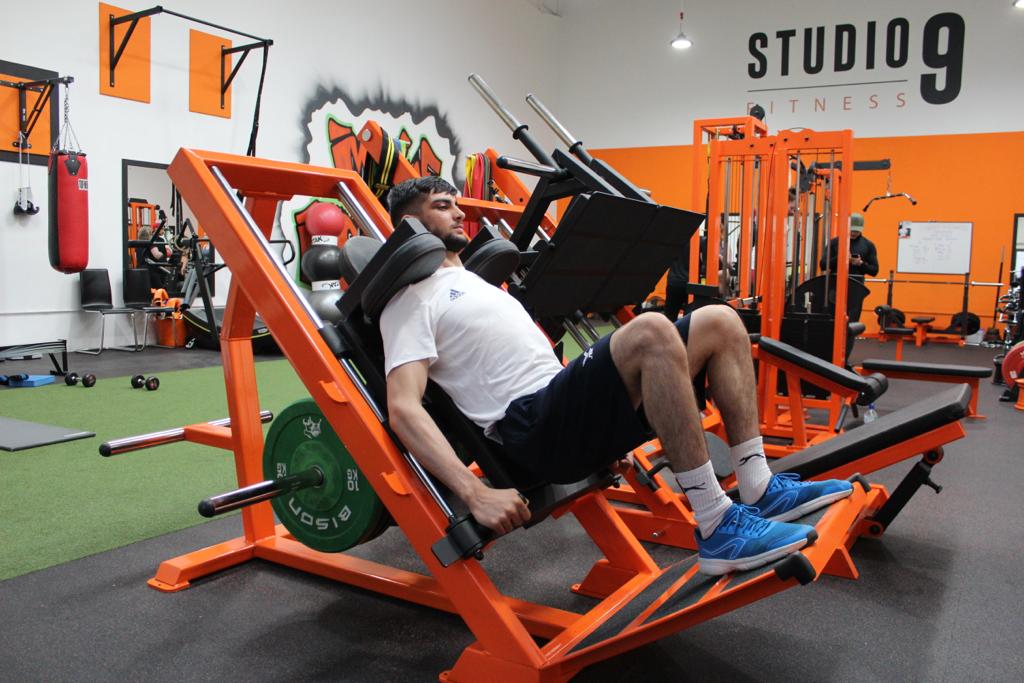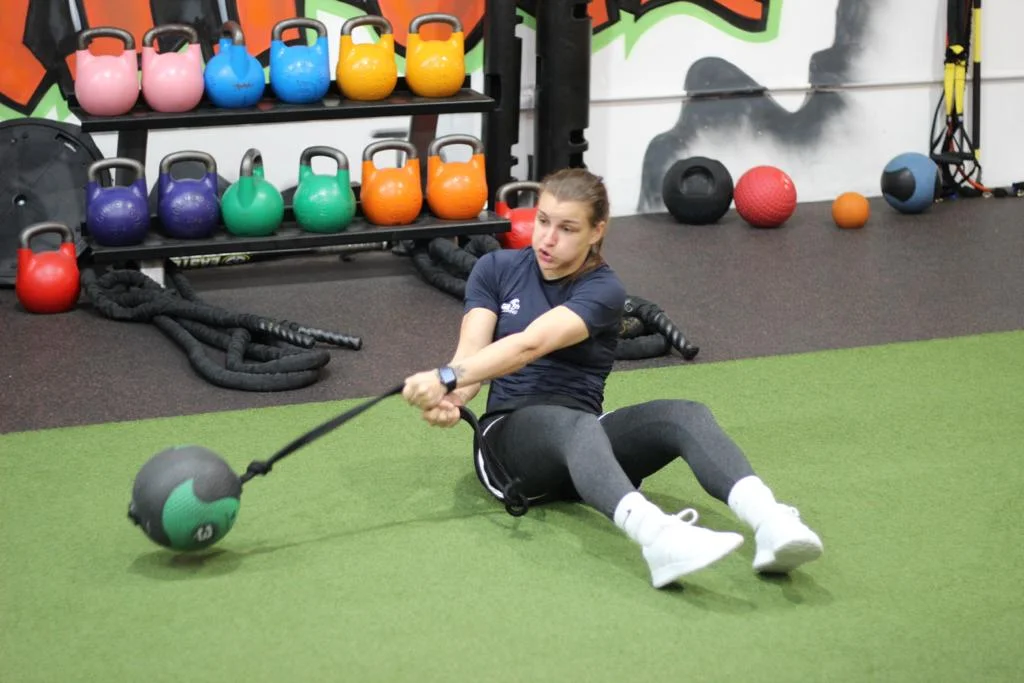This Article is Sponsored by Studio 9 Fitness. The Premier Sports Performance Facility in Wokingham, Berkshire.
Strength & conditioning in athletes is important for many reasons, all of which can help improve performance in any sport.
One of the main benefits of strength training is that it helps to improve an athlete’s posture, bone density and core strength. As a result of this, the likelihood of an injury among athletes, as well as the severity of the injury itself, is greatly reduced and when they do sustain an injury they are likely to be able to recover faster.
Strength training can help build and preserve muscle mass and strength. This, together with improved bone density, helps to reduce age-related decline in health and well-being, potentially increasing the longevity of an athlete’s career.
Hassan Azim
BNB Athlete & GB Boxer, Hassan Azim training for Strength.
S&C can also see improvements in flexibility and balance. Regular strength training leads to better muscle control, greater stability, flexibility, and mobility ensuring that athletes maintain proper exercise techniques and reach their full range of motion in order for target muscles to fire and strength to improve. With stronger muscles, athletes can then perform more complex movements and build even more strength and explosiveness.
Strength and conditioning works to make your body stronger, providing you with the skills you need in order to perform at your best ability. In particular when your core is strong, you will be able to transfer energy to the rest of the muscles, resulting in more powerful muscle contractions and quicker repetitions.
Through conditioning work, or more specifically cardiovascular training, athletes will experience increased blood flow to the muscles as well as capillary density adaptations. This degree of increase is necessary in order to provide the muscles with the required nutrients and remove the metabolic waste created by the active muscles. The adaptations in the athlete’s cardiovascular system help to improve fitness.
Power is the product of muscle force and movement speed. The combination of strength training and specific skill work — relative to one’s sport and position — has a positive influence on both of these parameters. Larger, stronger muscle fibers (especially the “fast twitch” variety) result in a higher rate and level of overall muscle force production, which results in the ability to demonstrate pronounced power output in designated athletic skills.
Laura Pain
BNB Athlete and Olympic Boxer, Laura Pain training for Power.
Every sport involves the application of force. Most people don’t realise that getting an athlete’s lower body stronger though exercises such as squats and lunges is the quickest way to make an athlete faster. For example, a lot of athletes can pedal as fast as a top-level sprinter, however they are unlikely to be able to apply as much force with each pedal stroke. Strength training will help in increase power and force production.
Motor Learning and Skill Acquisition is another benefit of S&C. First and foremost, the body learns the skill of the lift. This happens just like in any skill you learn, such as playing the piano; your brain puts together a motor program that allows you to better perform whatever you are trying to learn.
Intramuscular and Intermuscular Coordination is where the brain aspect of training begins for an athlete. Your muscles will learn to fire more efficiently within themselves. Similar to motor learning, however this is more of a specific gain in coordination and has excellent implications for athletic performance.
S&C also results in improved body composition of the athlete i.e. lower body fat levels and more overall lean tissue. This results in an increased resting metabolism. Muscle is a very active tissue. In essence, every pound of new muscle burns around 30-40 calories a day for tissue maintenance while the body is at rest. It also results in improved glucose metabolism. We know that poor glucose metabolism is associated with diabetes. Strength training is an effective means of improving glucose metabolism and has been shown to increase glucose uptake close to 25 percent after a mere few months of consistent exercise. Optimal body composition from strength training helps to prevent obesity.
As well as the physical benefits, strength training is important for the athlete’s psychology. The strength training benefits on the psychological aspect are often underestimated. I have seen so many athletes, that have grown in confidence over time as a result of their strength training. When they became stronger over time, they saw that the strength training improves the performance of their sport which has helped them to be more confident in their own sport and in competition.
It also results in an enhanced mood as it is common knowledge that endorphins are released during an effective training session.
Factors that S&C can help with:-
* Strength: Without strength, we remain stagnant, never improving our sports performance.
* Balance: A sense of balance allows you to remain in control of how your body moves.
* Agility: When an athlete is agile, they can make quick movements effectively.
* Speed: Every athlete wants to be faster! Speed is an advantage in any sport.


